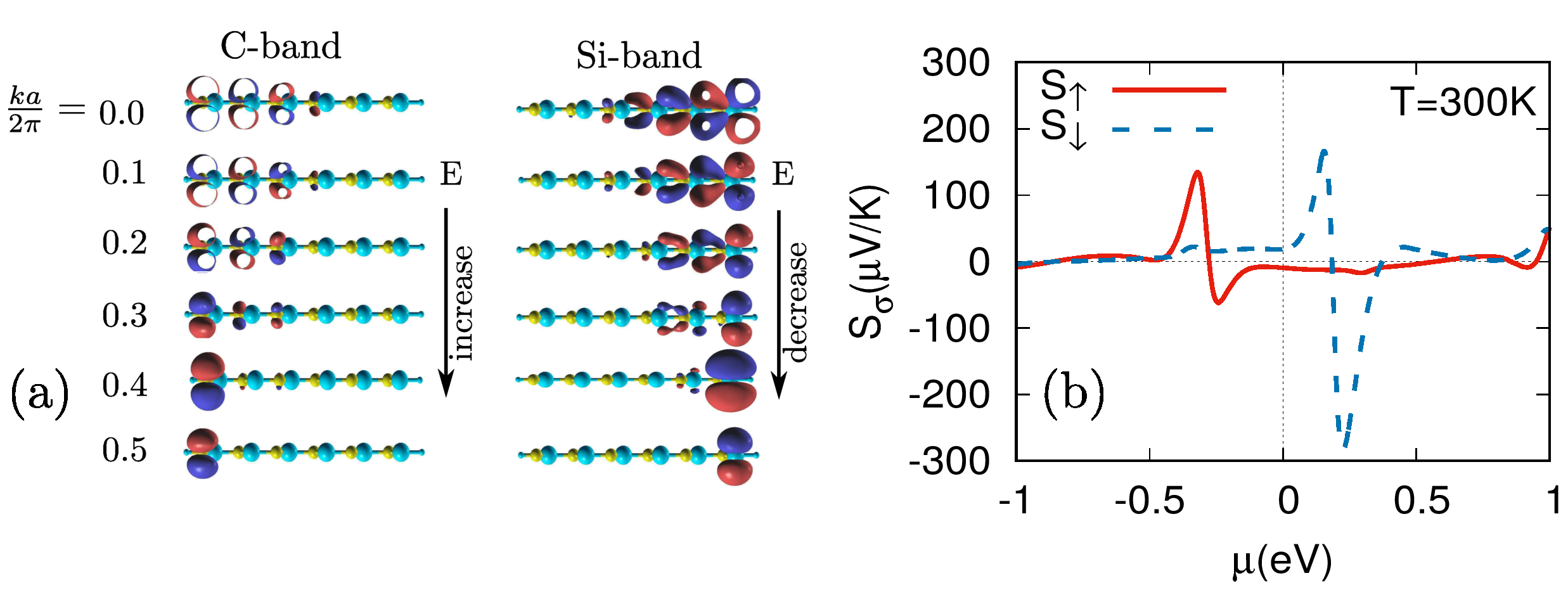
Recently, a research group led by Prof. ZHENG Xiaohong at Institute of Solid State Physics, Hefei Institutes of Physical Science has made new progress in the study of thermally induced spin current in two-dimensional (2D) materials by edge co-doping and asymmetric hydrogen-terminations.
How to generate spin current is always an attractive topic in spintronics. To date, quite a few schemes to produce spin current have been proposed or experimentally realized, including optical injection, adiabatic quantum pumping, spin Hall effect induced by spin-orbit coupling and current injection from a ferromagnet to a semiconductor, etc.
In addition, very recent experiments show that spin current can be induced in ferromagnetic alloy by a temperature gradient, from which an interesting problem arises that how to generate spin current thermally in 2D materials that are very important candidates for building spintronic devices.
Monolayer zigzag SiC nanoribbons (ZSiCNRs) present peculiar edge states which are separated from bulk states in energy, not like those in graphene nanoribbons. This makes it possible to use the edge states for device design.
However, to thermally induce spin current in perfect ZSiCNRs is not feasible due to the lack of differences of transmissions for different spins around the Fermi level. Thus it is of great importance to modulate this system to be suitable for achieving thermal spin current.
Based on density functional theory calculations, ZHENG's group proposed a scheme of "edge co-doping", with which the edge state transport channels in ZSiCNRs can be turned off or kept open by properly selecting the edge dopant and different spin channels can be controlled separately.
Especially, by replacing an edge C atom with a B atom and an edge Si atom with a P atom in the scattering region, a Seebeck thermopower with different signs for different spins and a finite conductance for both spins can be obtained in the linear response regime.
The subsequent thermoelectric field drives the electrons of different spin channels towards opposite directions, which leads unambiguously to a spin current.
Furthermore, by tuning the chemical potential and working temperature, pure spin current can be achieved.
In addition, the team found out that thermally induced spin current can be achieved in zigzag silicene nanoribbons (ZSiNRs) with asymmetric H-terminations, namely, with a sp2 edge (each edge C atom saturated by one H atom) and a sp3 edge (each edge C atom saturated by two H atoms).
The research was funded by the Natural Science Foundation of China.

Figure 1. (a) The bandstructure of the ferromagnetic SiC nanoribbon; (b) the spin-polarized transmission functions with B-P co-doping. (Image by JIANG Peng)

Figure 2. (a) The localization change of edge states in the two bands crossing the Fermi level; (b) spin-polarized Seebeck coefficients in the B-P co-doping case. (Image by JIANG Peng)

86-10-68597521 (day)
86-10-68597289 (night)

52 Sanlihe Rd., Xicheng District,
Beijing, China (100864)

